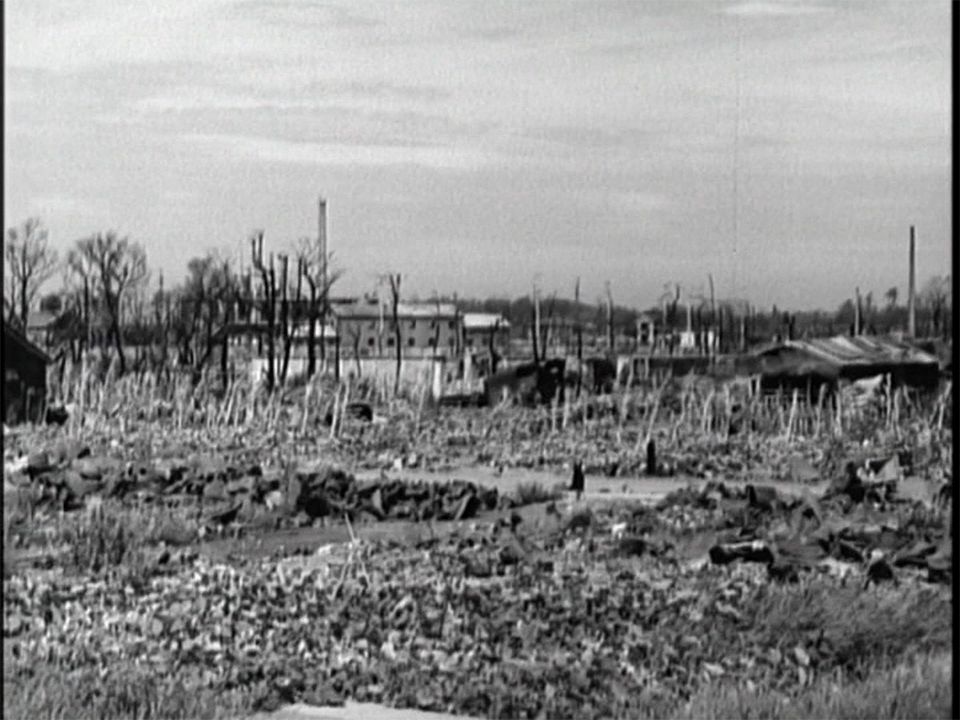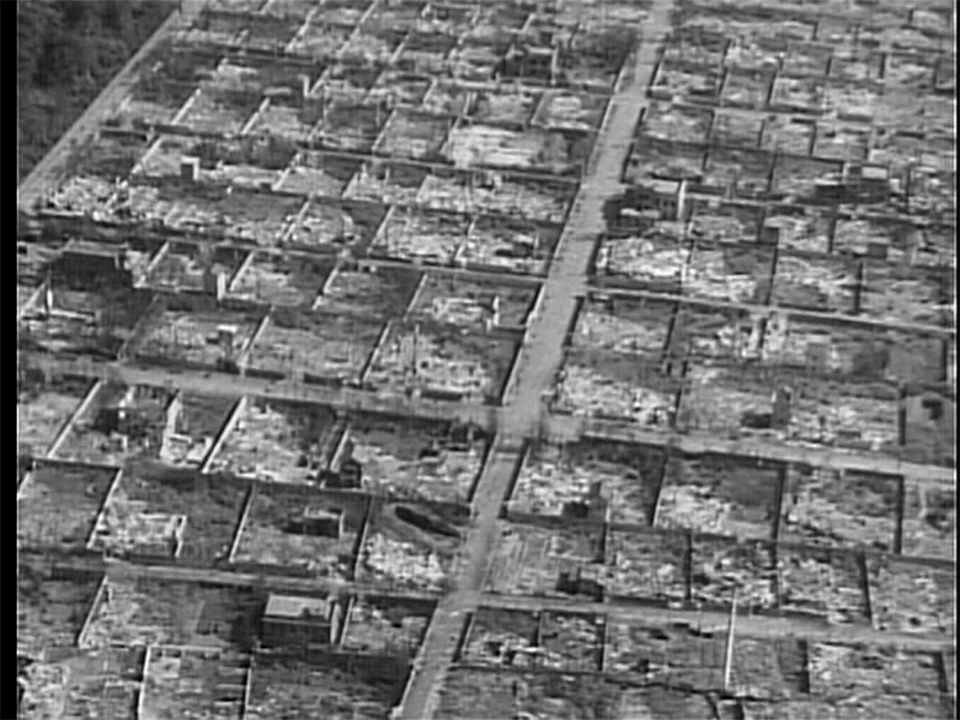Seth Paridon
An ominous, deep glow burned crimson on the horizon ahead as the huge silver B-29s streaked low above the surface of the Pacific. There would be no trouble finding the target this night, March 10, 1945. It was clearly marked for all in the formation to see, burning like a funeral pyre, the flames practically licking the night sky. Far back in the formation, Richard Baile of the 9th Bombardment Group, in his Superfortress, could “almost read a paper in the cockpit” due to the fires consuming Tokyo below. As Baile passed over the target and dropped his bombs, he couldn’t help but think of the utter horror that was taking place beneath him.
The horror that Baile was contemplating was the result of months of planning, multiple failures, a handful of experiments, and relatively few successes. In the summer of 1944, the United States Marine Corps and Army seized three islands in the Marianas chain, Saipan, Tinian, and Guam. These islands, unlike some of the other recent conquests, were not just mere stepping stones on the road to Tokyo. These islands held special strategic significance, and would play a vital role in the defeat of Japan in the coming months.
The Marianas' placement on the globe put Japan within striking range of Army Air Forces B-29 Superfortresses. The newest heavy bomber fielded by the AAF, the “Superforts” had an astounding range of over 3,200 miles and a ceiling of over 30,000 feet. The B-29s were designed to fly at altitudes so high that most enemy fighters could not reach them, and to cascade bombs on targets with ultimate precision and lethality. B-29s had been bombing Japan with little success from China since mid-1944. But when the bombers began using the new massive air fields in the Marianas chain on November 24, it marked the first time in history that a transoceanic bombing raid took place, and the first time an American aircraft formation had been aloft over Tokyo since Jimmy Doolittle’s Raiders had flown over the Imperial capital way back in 1942.
Dauntless Dottie led the first night raid on Tokyo on November 24, and would fly again over Tokyo on March 10, 1945.
The November 24 raid, while hyped beyond belief, did little damage. Incredibly fierce winds and thick cloud cover limited the strike to a paltry 24 bombers. What bombs rained down on the capital widely missed their target. More raids followed and more failures occurred. The B-29s, cruising along at 32,000 feet, were literally sucking their fuel tanks dry due to massive head winds, forcing many to crash into the sea on their way home with the silver behemoths devoid of the precious fuel needed to get the crews back to their island homes. Even when the winds up high weren’t that bad, they were below. Blowing sometimes at over 250 miles per hour at around 23,000 feet, the newly discovered jet stream blew the hundreds of bombs raining down on Japan harmlessly into the sea, where the Americans racked up an impressive fish kill total that would have made any Japanese fisherman green with envy. Resources and lives were being wasted in the daylight high-altitude attacks. Clearly something had to be done. Enter the general known as “Iron Ass."
General Curtis LeMay formally took over the XXI Bomber Command in January 1945, and was promptly given the responsibility of conducting the strategic air campaign against Japan’s home islands. Initially, LeMay’s results were painfully similar to those of his predecessor. LeMay realized that it wasn’t necessarily the men who were not getting the job done, it was the way in which the men were being told to do the job. High altitude tactics over Japan, with its unpredictable winds and weather, just simply weren’t going to cut it anymore. Faced with the thinly veiled threat, that unless LeMay and his “Superforts” inflicted extreme violence on Japan through the air, an amphibious invasion of the Home Islands would have to be executed with an estimated 1,000,000 potential American casualties, “Iron Ass” LeMay changed tactics. Drastically.
Throwing the tactics used in Europe out of the window, LeMay ordered his fliers to go against everything they had been trained to do. There would be no more 32,000-foot daylight raids. The B-29s would become night raiders, and they would come in low. LeMay’s advisors had convinced him that Japan lacked any real low-level flak capabilities, and the enemy fighters would be far less effective attacking the low flying bombers in pitch black darkness at altitudes ranging from 5-9,000 feet. The low altitudes, his advisors said, would negate the bedeviling jet stream and would allow his crews to place their bombs directly on the target. Not that real precision would actually be needed.
The preferred munitions for American heavy bombers were high explosive bombs, 500 and 1,000 pounders. Against European cities of stone and concrete, the conventional bombs performed extremely well. Against the wooden cities of Japan, specifically Tokyo, the “HEs” did not. Small scale, limited incendiary raids had been carried out earlier in the year by LeMay’s crews with some success. Nagoya and Kobe had absorbed the fire raids, and suffered accordingly. Convinced that the way to destroy Japan’s ability to wage war was by burning its wooden cities to the ground, LeMay ordered Mission 38 to proceed.
The fire raid against Tokyo on February 25 proved to be successful, and further convinced LeMay what he had to do next: Obliterate the Imperial capital by firestorm.
For a firestorm to be as destructive as possible, at least a man-made one, it had to have the right conditions. The weather had to be dry, and had to have been dry for quite a while. There had to be strong winds, and in Tokyo’s case, winds blowing in from the north. Finally, the ability of the target to fight the fire had to be limited.
The Imperial capital of Tokyo checked all of those boxes on the night of March 9-10. Tokyo had been unseasonably dry for that time of year, little rain had fallen recently, and the wooden structures of the city were bone-dry. The winds on the night of March 9, and into the early morning of March 10, were strong. Gusts of over 65 miles per hour were recorded in the city in numerous spots. Tokyo’s firefighting ability was next to non-existent for a city of its size. Just over 8,000 firemen were assigned to the Tokyo area, and between those 8,000 men there were 1,000 pieces of equipment…and exactly three firefighting extension ladders. Three. Air raid shelters in the city were also non-existent. The government felt that officially constructing air raid shelters would be damaging to morale so as to give the impression that Tokyo could actually be bombed by the enemy.
For his target, LeMay chose a small area of Tokyo, a three by four square mile area that housed an estimated 750,000 people. It was determined (correctly) by American intelligence that a high concentration of small factories that made up Japan’s cottage industry production capability were in this specific area of Tokyo. With the target selected, the airplanes loaded, and the crews briefed, the first B-29 lifted off from Guam’s North Field just after 5:30 on the afternoon of March 9, 1945. That first B-29 was followed by over 270 more, taking off from Guam, Saipan, and Tinian, at 50-second intervals…all bound for Tokyo. Mission number 40, codenamed Operation MEETINGHOUSE, was underway.



